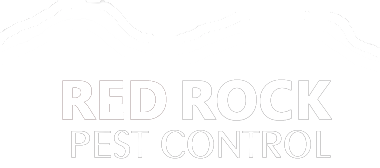
This isn’t the only instance in economics where animals are used as descriptors. Bull and bear are also used, where the former refers to a market affected by rising prices, while the latter is typically one when prices are falling. Trading involves risk and can result in the loss of your investment. All information on this site is for informational purposes only and is not trading, investment, tax or health advice. The reader bears responsibility for his/her own investment research and decisions.
At this point, you may be wondering where central bank interest rates fit into the overall picture of a nation’s economy. Here are the websites of the biggest central banks, to get you started. Now that you understand the two terms, it’s time to learn where to get this information. It would be nice if you could go to a website that told you the current bias of every central bank in the world.
Dove Economic Policy Advisor Definition vs. a Hawk
A Hawkish stance in economics and finance is when the central bank wants to tighten its policies in order to keep inflation, and then subsequently interest rates, low. Dovish statements are those statements that suggest that inflations effects hawkish definition finance are insignificant. For instance, the Federal Reserve Bank may use dovish language to describe inflation. When such tone is used, it means that the effects are negligible and there is unlikelihood of the bank taking aggressive measures.
- We also offer a range of trading guides to supplement your forex knowledge and strategy development.
- Also, when there is a high rate of employment, it means that many people are earning high wages.
- By making borrowing cheaper and more accessible, dovish monetary policy encourages businesses to expand and invest, leading to job creation and increased consumer spending.
- As consumers and businesses spend less money, the economy will grow more slowly or could even contract.
- When the interest rates are low, it means that most people can access money.
In this post, I’ll give you the trader’s definition of both hawkish and dovish, and show you two easy mnemonics that you can use to remember them in the future. For example, if you are a business owner, imagine the nightmare that comes with having to plan a budget or long-term business strategy. If you are a consumer, imagine going to the grocery store knowing that next week the price of everything will be higher.
What Is a Dove?
The opposite of a hawk is a “dove.” Doves are more concerned with maximizing unemployment and often have a higher tolerance for inflation. We introduce people to the world of trading currencies, both fiat and crypto, through our non-drowsy educational content and tools. We’re also a community of traders that support each other on our daily trading journey.
A Map of Inflation Around The World Explains the Fed’s Less … – Investopedia
A Map of Inflation Around The World Explains the Fed’s Less ….
Posted: Sun, 25 Jun 2023 07:00:00 GMT [source]
Hawkish is usually recommended when the inflation rate has risen, and there are signs that it will continue to rise if steps aren’t taken now. Alan Greenspan, who was often portrayed in the media as a hawk was said to have become a dove in the late 1990s when he urged the Federal Open Market Committee not to raise rates. The real benefit of trading that most people miss is that it’s one of the most direct paths to deep personal development.
What does a hawkish or dovish central bank tone mean?
Jerome Powell, named to the post in 2018, was rated as neutral (neither hawkish nor dovish) by the Bloomberg Intelligence Fed Spectrometer. Loretta Mester, the Cleveland Fed president, also fits into this category. Mester studied under Charles Plosser, the former president of the Fed Bank of Philadelphia and a committed hawk.
After all, one of the Fed’s mandates is to promote maximum employment. The opposite are a dove and dovish policies, seen as more meek or conservative. Hawkish policies tend to favor savers and lenders (who can enjoy higher interest rates). The Hawkish stance is typically used to reduce the risk of deflation. Public debt would also become easier to manage because businesses and consumers would buy less- which would reduce the amount of money that has to be borrowed.
Doves, Consumer Spending and Inflation
A budget hawk, for example, believes the federal budget is of the utmost importance—just like a generic hawk (or inflation hawk) is focused on interest rates. A war hawk, similarly, pushes for armed conflict to resolve disputes as opposed to diplomacy or restraint. Increasing the Federal Reserve balance sheet https://g-markets.net/ through quantitative easing (QE). QE is the purchasing of MBS and treasuries that increase the money supply in the economy to stimulate it. So, as you probably know by now, a dovish monetary policy will lead to lower interest rates (or an equivalent action) and a possible weakening of the country’s currency.
- Losses can exceed deposits.Past performance is not indicative of future results.
- Banks lend more freely because of the high-interest rates of the loans.
- So, as you probably know by now, a dovish monetary policy will lead to lower interest rates (or an equivalent action) and a possible weakening of the country’s currency.
- A dovish central banker is one who is willing to keep interest rates low in order to stimulate the economy.
Higher interest rates make it more expensive for consumers and businesses to borrow money. As consumers and businesses spend less money, the economy will grow more slowly or could even contract. This results in prices of goods and services stabilizing, which halts inflation.
They also argue that an increase in economic growth leads to a high rate of borrowing among the consumers, which encourages spending. Therefore, doves believe that low-interest rates have few negative effects. Doves prefer low-interest rates as a means of encouraging economic growth because they tend to increase demand for consumer borrowing and spur consumer spending.
Indeed, back in December 2015, the Fed hiked rates for the first time since the financial crisis. When monetary policy is dovish, it means that policymakers favor looser, more accommodating policy, because they want to stimulate growth in the economy. The folks at the Federal Reserve accomplish this primarily by lowering interest rates.

